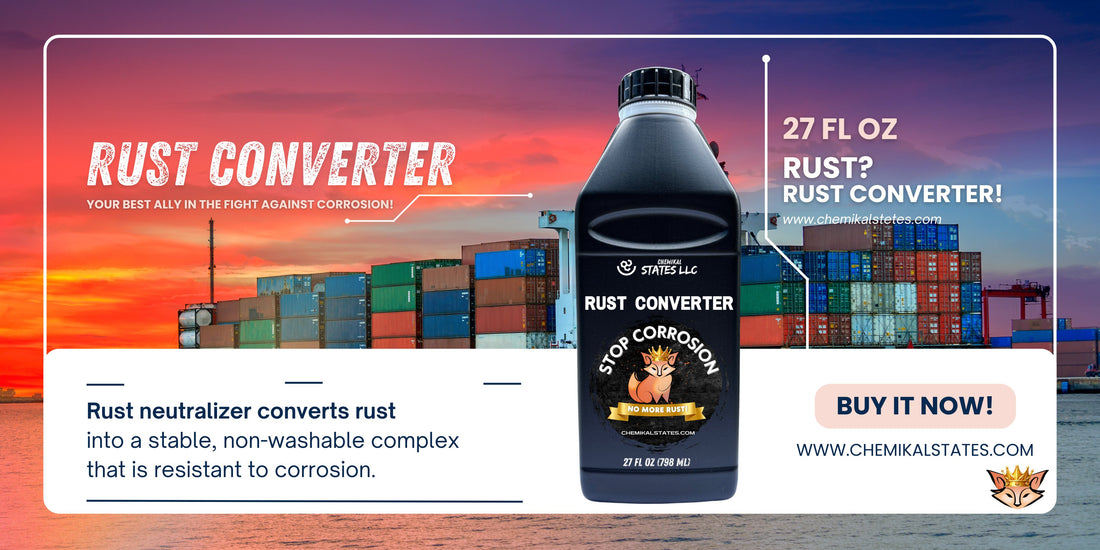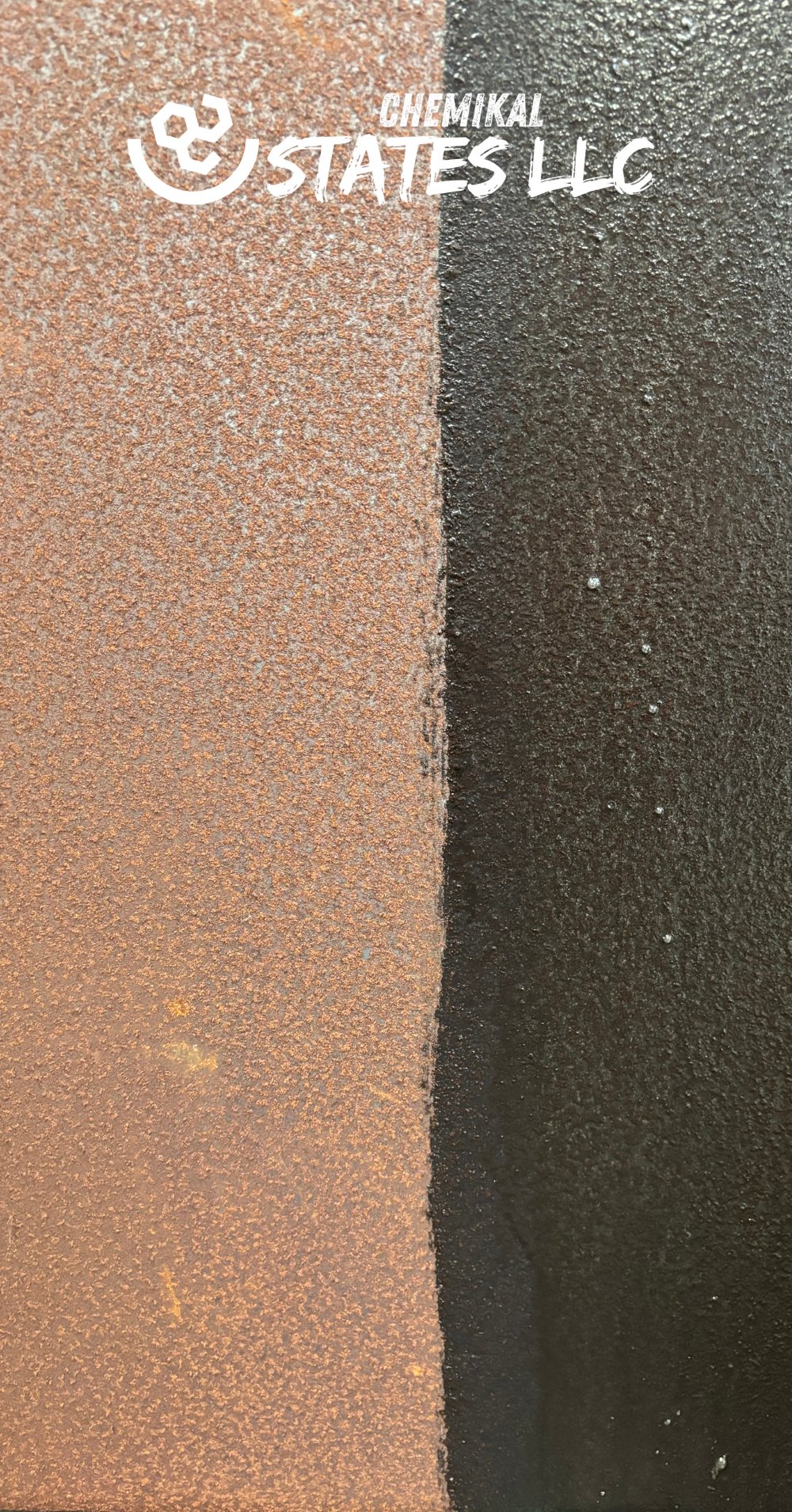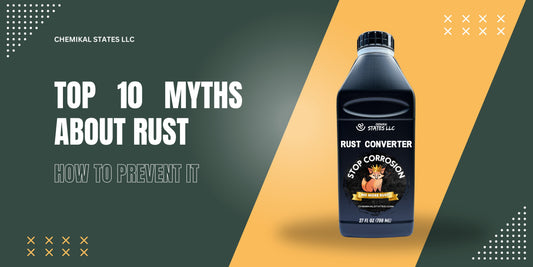
How to Protect Metal Surfaces in Coastal Areas: Combatting Rust and Corrosion
Share
How to Protect Metal Surfaces in Coastal Areas: Combatting Rust and Corrosion
Coastal areas are known for their breathtaking views and tranquil atmospheres, but they also present unique challenges when it comes to protecting metal surfaces. The high salt content in the air and water, combined with constant exposure to moisture, makes metal particularly susceptible to rust and corrosion. Whether you're dealing with outdoor furniture, industrial equipment, or even shipping containers, rust can quickly become a costly problem if not addressed properly. Fortunately, with the right products and techniques, you can protect your metal surfaces and keep them looking and functioning their best for years to come.
Why Rust Converter is Essential for Coastal Protection
One of the most effective ways to combat rust in coastal environments is by using a Rust Converter. Unlike traditional rust removers, which only strip away rust, a Rust Converter chemically transforms rust into a stable, non-corrosive compound. This not only halts the rusting process but also creates a protective layer that can be painted over, providing long-lasting protection against the harsh coastal elements.
Rust Converter for Shipping Containers
Shipping containers are particularly vulnerable to rust, especially in coastal areas where they are exposed to saltwater spray and humid air. Rust can compromise the structural integrity of containers, leading to costly repairs or replacements. That’s why a Rust Converter is frequently used to protect these containers.
When applied, the Rust Converter stops rust in its tracks by transforming it into a stable compound, making it ideal for the harsh conditions of maritime environments. The Rust Converter is a go-to solution for protecting shipping containers, ensuring they remain durable and secure even in the most challenging conditions.
Common Applications of Rust Converter in Coastal Areas
- Outdoor Furniture: Metal furniture exposed to coastal air is prone to rust. Applying a Rust Converter will not only stop existing rust but also prevent future corrosion.
- Boats and Marine Equipment: Boats, trailers, and other marine equipment can benefit from a Rust Converter, ensuring they remain in top condition despite constant exposure to saltwater.
- Industrial Equipment: For industrial equipment used in coastal areas, a Rust Converter provides the necessary protection to extend the life of the machinery.
- Shipping Containers: As mentioned, shipping containers are frequently treated with Rust Converters to protect them from the harsh conditions of sea transport and storage in ports.

How to Apply Rust Converter: A Step-by-Step Guide
Applying a Rust Converter is a straightforward process, but it’s important to follow the correct steps to ensure maximum effectiveness. Here’s how to apply a Rust Converter to rusted metal surfaces:
Step 1: Surface Preparation
- Clean the Surface: Begin by removing any loose rust, dirt, and debris from the surface using a wire brush or scraper. This will ensure that the Rust Converter adheres properly to the metal.
- Degrease if Necessary: If the surface has any grease or oil, clean it with a degreaser. The Rust Converter will work more effectively on a clean surface.
Step 2: Apply the Rust Converter
- Shake Well: Before applying, make sure to shake the Rust Converter bottle thoroughly to mix the ingredients.
- Apply Evenly: Using a brush, roller, or sprayer, apply an even coat of the Rust Converter to the rusted area. Ensure that the entire surface is covered for the best results.
- Allow to Dry: Let the Rust Converter dry and react with the rust. This process typically takes 24 to 48 hours, during which the rust will be chemically transformed into a stable, black compound.
Step 3: Post-Application
- Inspect the Surface: After the Rust Converter has dried, inspect the surface to ensure all rust has been converted. If any areas were missed or need additional treatment, apply a second coat.
- Paint the Surface: For added protection, especially in coastal areas, apply a primer followed by a topcoat of marine-grade paint. This will seal the surface and provide long-term protection against moisture and salt.
Step 4: Maintenance
- Regular Inspections: Periodically inspect the treated surface for any signs of new rust or wear. Promptly address any issues with a fresh application of Rust Converter.
- Touch-Ups: For heavily exposed surfaces, consider reapplying the Rust Converter every few years to ensure ongoing protection.
Detailed Product Description: Why Our Rust Converter Stands Out
Our Rust Converter is not just another rust treatment—it’s an innovative solution designed for those who demand the best in rust protection. Here’s why our Rust Converter is the top choice for coastal applications:
- Advanced Chemical Formula: Our Rust Converter uses a unique blend of tannic acid and polymers to transform rust into a stable, non-corrosive compound. This chemical reaction halts rust in its tracks, preventing further corrosion.
- Dual-Action Protection: Unlike other Rust Converters, our formula also degreases the surface as it converts rust, ensuring a cleaner, more effective treatment.
- Easy Application: Available in both liquid and spray forms, our Rust Converter can be easily applied to surfaces of any size, from small tools to large shipping containers.
- Long-Lasting Results: Once applied, the Rust Converter creates a protective layer that can be painted over, providing long-term protection against rust, especially in harsh coastal environments.
- Versatile Use: Ideal for a wide range of applications, including outdoor furniture, marine equipment, industrial machinery, and shipping containers.
Dosage and Application Instructions
- For Small Surfaces: Apply the Rust Converter using a brush or sprayer. A single coat is usually sufficient for small areas. One quart of Rust Converter typically covers up to 125 square feet.
- For Large Surfaces: For larger areas, such as shipping containers, use a roller or an industrial sprayer. Ensure even coverage across the entire surface. One gallon of Rust Converter covers approximately 500 square feet.
- Curing Time: Allow the Rust Converter to cure for 24 to 48 hours before applying any additional coatings or exposing the surface to harsh conditions.
For more detailed application instructions, refer to our comprehensive guide: How to Use Rust Converter: A Step-by-Step Guide for Beginners.
FAQ: Rust Converter for Coastal and Marine Applications
1. Is Rust Converter Effective on Shipping Containers?
Q: Can I use Rust Converter on shipping containers?
A: Yes, Rust Converter is highly effective on shipping containers. It stops rust by converting it into a stable compound, making it ideal for protecting containers exposed to saltwater and humid coastal air. For best results, apply a marine-grade topcoat after the Rust Converter has cured.
Learn more about using Rust Converter in maritime environments in Rust Removers vs. Rust Converters: Why a Rust Converter is the Superior Choice for Metal Restoration.
2. How Often Should I Apply Rust Converter in Coastal Areas?
Q: How frequently should I reapply Rust Converter on metal surfaces near the coast?
A: The frequency of reapplication depends on the level of exposure to saltwater and the overall condition of the metal. In general, it’s recommended to inspect the treated surface annually and reapply Rust Converter as needed, particularly if the surface shows signs of wear or new rust formation.
For more on maintenance in coastal environments, see The Ultimate Guide to Rust Converter: Protect Your Metal and Stop Corrosion.
3. Can Rust Converter Be Used on Boats and Marine Equipment?
Q: Is Rust Converter suitable for use on boats and other marine equipment?
A: Yes, Rust Converter is ideal for use on boats, trailers, and other marine equipment that are regularly exposed to saltwater. The Rust Converter will neutralize existing rust and provide a protective base that can be painted for additional protection.
Learn how Rust Converter works on marine applications in Rust Converter vs. Rust Encapsulator: The Ultimate Solution for Perfection.
4. What Kind of Paint Should I Use Over Rust Converter in Coastal Areas?
Q: What type of paint should I use after applying Rust Converter on surfaces exposed to saltwater?
A: After the Rust Converter has fully cured, it’s best to use a marine-grade paint or a high-quality, corrosion-resistant topcoat. This will provide additional protection against the harsh coastal environment, ensuring long-lasting durability.
For painting tips and more, read Rust Remover vs. Rust Converter: What's the Difference?.
5. How Does Rust Converter Protect Metal in Port and Maritime Environments?
Q: How effective is Rust Converter in protecting metal surfaces in ports and maritime environments?
A: Rust Converter is highly effective in these environments, where metal surfaces are constantly exposed to saltwater, humidity, and other corrosive elements. By converting rust into a stable compound and providing a protective layer, Rust Converter ensures that metal surfaces remain durable and resistant to further corrosion.
For more on using Rust Converter in tough environments, visit Best Rust Neutralizer for Trucks and Vans: Chemikal States Application Guide and Benefits.
By understanding the specific challenges posed by coastal environments and using the right products like our Rust Converter, you can effectively combat rust and protect your investments. Whether you’re maintaining a fleet of shipping containers, preserving your outdoor furniture, or ensuring your boat stays seaworthy, our Rust Converter is the solution you need for long-lasting protection.
For more information on how to use Rust Converter and to explore our full range of products, visit our Rust Converter Blog and discover why our product is the top choice for coastal and maritime applications.










